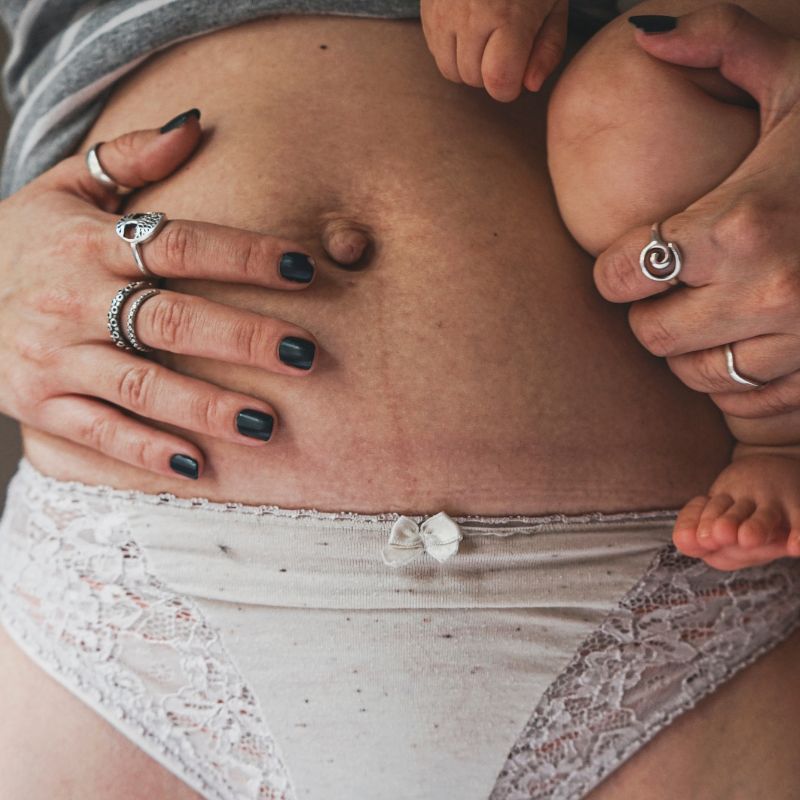Hey soon-to-be parents! Welcome to the rollercoaster of emotions, excitement, and a bit of nervous anticipation that is the journey to parenthood. Just like parenting, there's no one-size-fits-all when it comes to labour and delivery choices, but we’ll take you through all the key info you need on your birth options, so you can make informed decisions.
We’ve teamed up with antenatal hypnobirthing teacher, Lizzie (Own Your Birth UK), to talk you through Understanding Your Birth Preferences.
Birth plan essentials
A birth plan, also sometimes referred to as a ‘birth preference list’, outlines what care you would like during labour and delivery, as well as immediately after the birth too! You can write your personalised birth plan either yourself or by using the NHS birth plan template, which you can find here. You might have an appointment made for you to discuss this, but if you don’t, this is something you should ask your maternity team about, in order for you to help feel empowered and informed for any decisions during labour.
It’s great to head into childbirth knowing your options available, but keeping an open mind and being flexible should any complications arise.
Here are some things to consider putting into your birth plan:
- Birthplace setting: where do you want to give birth
- Birth partner: what you want them to support with
- Equipment and facilities
- How you want the birth room to be setup: candles, dimmed lighting etc
- Preferred labouring positions
- Pain relief preferences
- What kind of contact with medical staff you would prefer
- If you want skin to skin, breastfeed or wash baby post-birth
- Who you want to cut the cord
- Preferences on how you want to deliver the placenta
- If you want the Vitamin K injection or not
Role of the Birth partner
What does a birth partner do?
A birth partner is someone you choose to have with you during your birth to support and advocate for you. It’s really important that you talk about your birth preferences with your birth partner, so that they can help support you and speak up for you if need be.
Who can be a birth partner?
This is often your partner, but it could also be a parent, another family member, or even a close friend which you trust. It could even be an interpreter if English isn’t your first language, or a carer if this is someone you rely on daily. Some people like to hire a professional birth partner, known as a Doula, who is someone that is trained to support people in childbirth.
Whoever it is, you want to feel comfortable and safe in their presence, as you can often feel quite vulnerable during labour and birth.
How many birth partners can I have?
It’s important to check with the hospital trust you intend to give birth at, on how many people are allowed in the birthing room, as some trusts have restrictions on this. If you are having a home birth you can have as many birth partners as you like.
Caesarean birth vs. vaginal birth
Vaginal births and caesarean births are two methods of delivering a baby, each with its own set of considerations and potential benefits. Vaginal births occur through the natural passage of the baby through the birth canal, involving the mother's pelvic area as well as the cervix. This method is generally considered the less invasive option, and is often associated with a quicker recovery for the mother. You might experience an assisted vaginal birth, where a doctor uses forceps or ventouse (a suction cup) to help deliver your baby - this is always done under good pain relief, and you will always be informed if your medical team think this is a necessary procedure during birth.
Caesarean births, on the other hand, involve a surgical incision into the mother's abdomen and uterus to deliver the baby. You can opt for a caesarean section if you think this is the route you’d like to go down, and should speak to your maternity team about this. While caesarean sections are sometimes necessary for medical reasons, they typically entail a longer recovery period and carry additional risks, which you can also speak to your maternity team about.
Pain relief during labour
It’s important to note that some pain relief options are only available in certain birth settings, and you should speak to your maternity team to help you decide which are best suited for your own personal circumstances, setting and medical history.
Here are some non-pharmacological options that can be done wherever you intend to give birth:
- Breathing techniques and relaxation: These techniques range from slow breathing, to visualisation, and aim to help you manage your discomfort, stay focused, and promote relaxation during contractions.
- Hypnobirthing: Hypnobirthing takes breathing techniques and adds relaxation, visualisation and mindfulness techniques to help you concentrate on your body and the birth of your baby. Have a look for a local accredited hypnobirthing teacher, or check with your midwife/local maternity services to see who offers classes in your area. Hypnobirthing teacher Lizzie offers free sessions to see if hypnobirthing is suitable for you!
- Massage and Counterpressure: Physical touch and massage, especially on the lower back, can provide comfort and distraction from pain.
- Hydrotherapy: Immersing in a warm bath or using a shower during labour can help ease discomfort. The buoyancy of water supports the body and provides relaxation. You could also consider a water birth, where you labour and give birth in a large bath! Water birth facilities are more common in a midwife led unit, but can also be found in hospital settings too, so be sure to check with your maternity team what is available to you.
- Labour Positions for Comfort: Changing positions frequently, such as walking, rocking, or swaying, can help manage pain and encourage the progression of labour.
Here are some pharmacological options that can be provided at a home birth, midwife led unit, or hospital (but always check your local trust for what is available to you, as this can differ!):
- Paracetamol & Codeine: Never underestimate the power of these over-the-counter medications! They can be used as a great underlying pain relief option to see you through labour and delivery.
- Entonox: Known more commonly as ‘gas and air’. This is a self-administered gas that you inhale through a tube or mask. It is nitrous oxide, which helps to take the edge off the pain and provides a sense of relaxation - it can make you feel quite woozy! It is considered safe for both the mother and the baby.
Here are some pharmacological options that are only available in a hospital setting:
- Pethidine/Diamorphine/Meptid: These drugs are administered via an injection into your leg or bottom to provide pain relief. They are an opioid, so the effect is that you may feel more relaxed, but also drowsy, and sometimes a bit sick. They can often be given with an anti sickness injection, so make sure you ask about this as an option if it's something that worries you. You can read more about the benefits and side effects here.
- Epidural Anesthesia: An epidural involves injecting anaesthetic medication into the epidural space in the spine, numbing the lower half of the body and alleviating pain. It is administered by an anaesthetist and provides effective relief for many women. You can read more about the side effects here.
Choosing a birth setting
It’s important to know the differences between a midwife led unit, an obstetric hospital, and home birth. They all provide different pain relief options, and in some medical circumstances, a hospital may be more suitable. Here’s some things to consider:
Midwife-led birthing centres (MLU)
- There are no doctors at an MLU, but experienced midwives are trained on what to do should an emergency situation arise.
- MLU birthing is for 'low risk pregnancies' with reduced chance of complications.
- MLUs can be connected to hospitals or standalone, requiring ambulance transfer for complications.
- MLUs offer more water birth facilities.
- MLUs create relaxed, home-like environments with dim lighting and mobility encouraged.
- The NICE guidance favours MLUs as safest for straightforward births, reducing intervention risks.
- MLUs offer reduced pain relief options but encourage non-pharmacological support.
Hospital birth details
- You’ll be advised to give birth in an Obstetric Unit at the hospital if you or your baby are likely to need care from an obstetrician or other health professionals before, during or after labour.
- Immediate access to specialists like anaesthetists or neonatal paediatricians is available.
- Full range of medical pain relief, including Epidurals, is offered.
-
Statistically, you are more likely to experience an intervention during your birth such as induction or assisted birth, due to something called a cascade of interventions.
Home birth considerations
- Surrounded by your own comforts to help you feel safe and calm.
- Supported by experienced midwives, who don’t even necessarily have to be in the room with you all the time if you don’t want this.
- Home birth provides non-pharmacological pain relief and Gas & Air. All other pain relief options require hospital administration. Trusts vary in home birth pain relief, so consult your maternity team.
- If complications arise, you would have to be transferred into a hospital via an ambulance.
Understanding your labour and delivery options not only gives you a sense of empowerment and control but also lets you create a birth preference list that suits your preferences. Make sure to seek advice from your maternity team.
Resources:
- Find an NCT Antenatal class near you: https://www.nct.org.uk/courses-workshops
- Follow Hypnobirthing Antenatal Teacher Lizzie at @OwnYourBirthUK
- https://ownyourbirth.uk/
- AIMS provides independent support and information about maternity choices: http://www.aims.org.uk/
- The Birthplace Study compares outcomes for births in different settings for women with a low-risk pregnancy: https://www.nct.org.uk/birth/professional/research/pregnancy-birth-and-postnatal-care/birth/birthplace-study
















